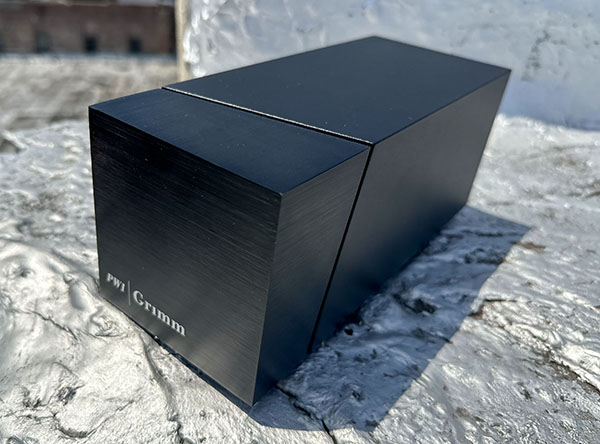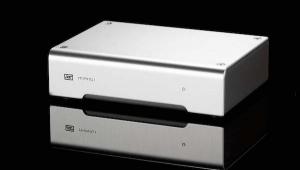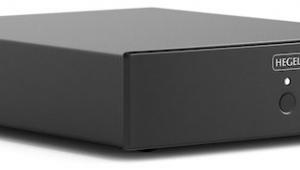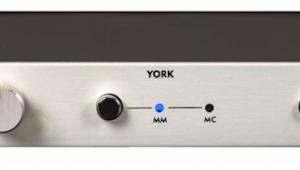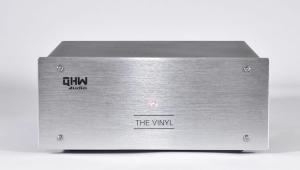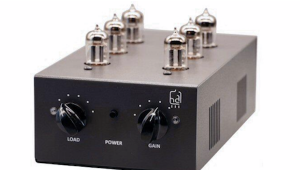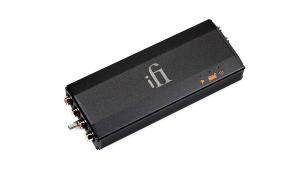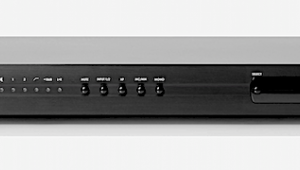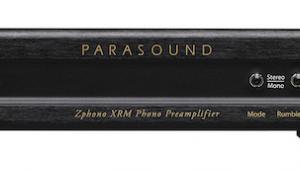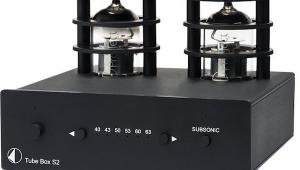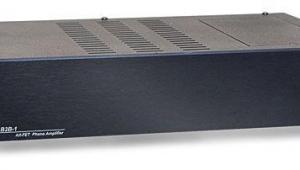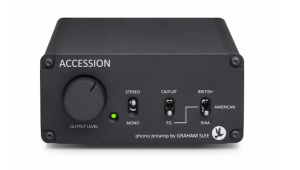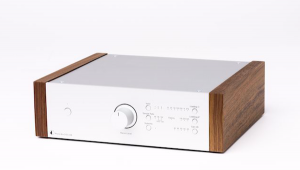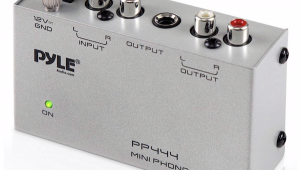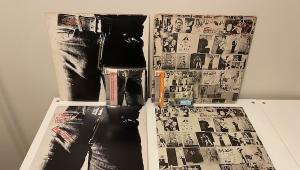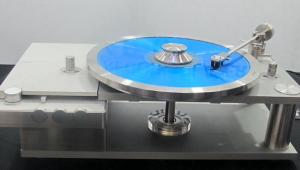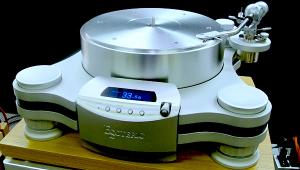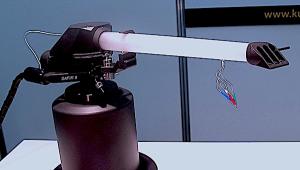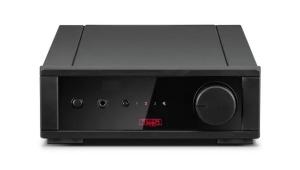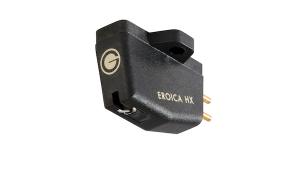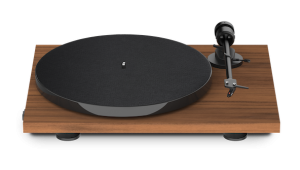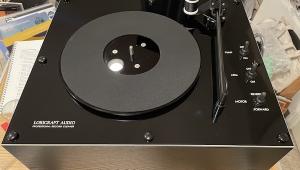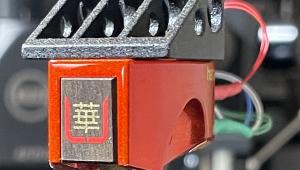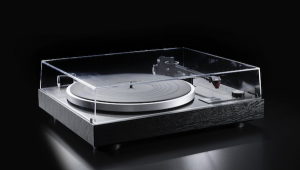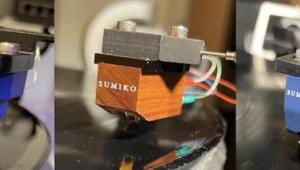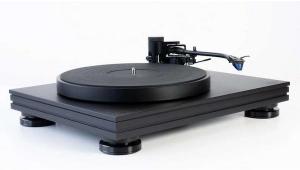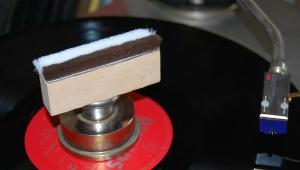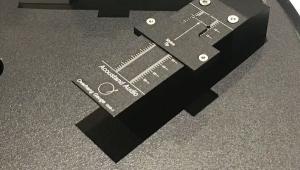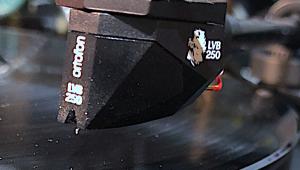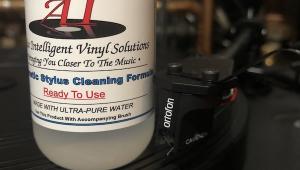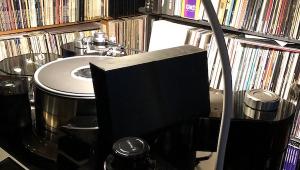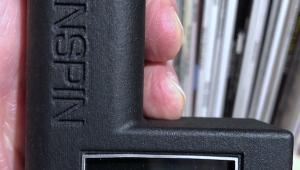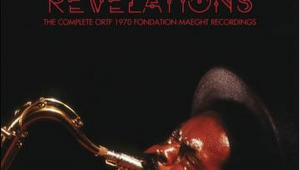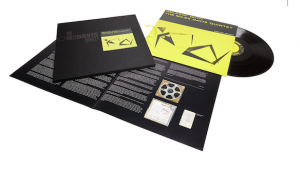Grimm Audio PW1 Phono Preamp
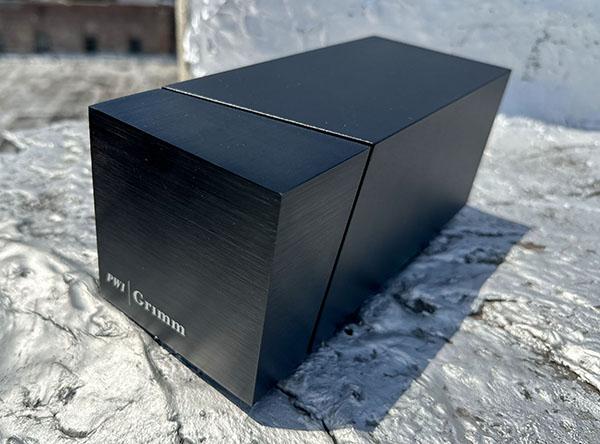
Nestled in the lowlands of the Netherlands, Grimm Audio has carved out quite a nice niche for itself, one that resonates with precision engineering and well-reviewed sound quality. In the realm of digital audio, Grimm stands out, as a number of their products — the MU1 streamer, the MU2 preamp/DAC/streamer, and the LS1c playback system amongst them — are highly regarded. In fact, the latter two have received raves for both sound and measurements over on our sister site Stereophile. Grimm Audio has certainly pushed the boundaries of hi-res digital playback with an almost casual brilliance — and they’ve also been making their presence known when it comes to what they offer in the analog realm as well.
Case in point: The Grimm PW1 phono preamp ($4,900), with its rectangular, brick-like appearance, is a stark contrast to conventional audio equipment. Despite its aesthetics, this unit packs a serious wallop in its modest frame. The Grimm site touts a “unique minimalistic electronic design” in describing the PW1, as it offers both MC and MM cartridge inputs, RCA and XLR outputs, and gain and load settings tucked away under a slidable bottom plate. It boasts an internal linear power supply, a copper-shielded interior, and quite compact dimensions of 4 x 4 x 10in (w/h/d). Topping it off is a generous 5yr limited warranty, making it a compelling choice.
For the creation of the PW1 “Phono Wizard” (as it’s referred to in its manual, and elsewhere), Grimm Audio’s co-founder Peter van Willenswaard joined his electronic design to Michiel Uylings’ “simple but powerful cabinet shape.” Grimm’s design team made the copper-shielded interior.
Willenswaard himself has characterized the PW1 as being designed for low noise and speed, adding that the toroidal transformer was developed together with Netherlands toroidal manufacturer Amplimo so that it could be built-in without creating hum. Furthermore, all power supplies are of the internal shunt variety, and the number of capacitors has been kept to a minimum, the thinking being that they may, at any time, have an impact on playback — especially when it comes to phase and timing.
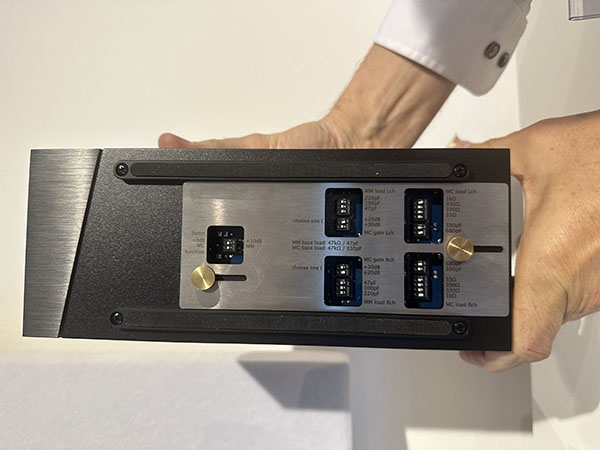
Features & Specs
An informative and well-written PDF manual lays out all the necessary specs (for the hands-on-paper-preferred folks amongst us, a printed manual is also included in the box), but let’s take a moment to dive into the options panel in detail. Two substantial rubber strips border the unit’s bottom control panel, its slidable metal door held in place by two large brass thumbscrews. Five small windows contain multiple dip switch adjustments in this hefty phono preamp. Laid out in a mirror-like, left channel/right channel array, a single window holds a boost function of +0dB for MC, +10dB for MM. The four remaining windows offer MM loading of 47pF, 100pF, and 220pF, while MC loading stands at 1kohms, 33ohms, 100ohms, and 330ohms. Gain switches comprise 330pF and 680pF for MM, and +20dB and +30dB for MC. In short, this extremely well-constructed phono preamp is infinitely, easily adjustable.
The PW1’s front panel, positioned ahead of its diagonally cut indentation seam, features an LED that lights up blue when powered. At the rear, pairs of heavy-duty RCA jacks for MM/MC inputs are accompanied by both RCA and XLR outputs, along with a master power button and ground screw. The PW1 is exquisitely finished in black brushed aluminum.
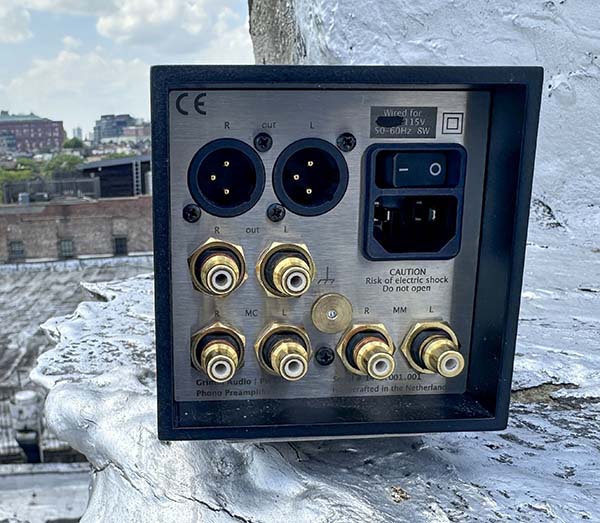
Setup
My system for this review included Tavish Audio Design Adagio, Manley Labs Chinook Special Edition MkII, PrimaLuna EVO 100, and Allnic DT-5000 phono preamps, and Voxativ Ampeggio loudspeakers. Cabling came courtesy AudioQuest Pegasus and Firebird, Triode Wire Labs Spirit II (RCA) interconnects, and AudioQuest William Tell Zero (10in) speaker cables.
My Tavish Adagio phono preamp (now sadly discontinued) is the king of 2k tubed phono preamps, with excellent tonal saturation and a lush smoothness that makes components sing. Switching to the Grimm PW1 delivered a dramatic sense of benevolence in every area. The soundstage seemed to stand at attention and expand in all directions. It cast a deep, wide soundfield that only changed parameters when the record changed, adjusting accordingly, grandly, surprisingly. Perhaps not as lush and smooth as the Tavish, the PW1 bettered it in most other regards.
If I didn’t know beforehand, my listening sessions would not have confirmed whether the Grimm is a solid-state or tubed phono pre — it’s simply solid, musical, and organic with a sense of boldness and authority that never confronts but only represents, like a fashion model assured of their presence, with no need to prove exceptionality.
The Grimm PW1 delivers a robust, well-defined, and precise handling of instruments and vocals, with a slight forward presence. Its bass is potent, dense, and tightly controlled. Overall, it maintains a balanced tonal and frequency profile, offering ample punch, drive, drama, and sustain.
It’s also cool, calm, measured and a little calculated — but ultimately expressive, embracing vinyl so beautifully it makes music reconstruction a joy. Unerring transparency, fine dimensionality, and a solid balance between tonal color and undying clarity are the PW1’s raison d’être.
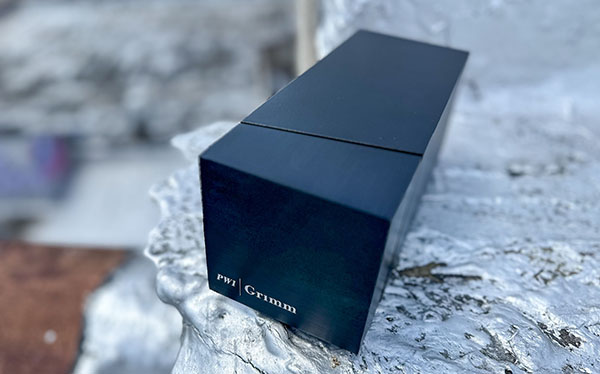
Listening Sessions
To judge the Grimm PW1 against my aforementioned in-house phono preamps, I upped its gain +30dB and adjusted the other preamps accordingly. I played one record as a barometer, Yusef Kamaal’s 2016 LP Black Focus (Brownswood Recordings BWOOD0157LP), a contemporary jazz/breakbeat album of propulsive grooves, deep ’n’ low electric bass, and probing melodic textures. Spoiler alert: The Grimm did its thing.
AP editor Mike Mettler also happened to spend some quality time with the Grimm PW1 hooked up to his system before he sent it over to me for my portion of this review, so I’m going to hand over the balance of the listening section to him to share his findings. Take it away, Mike.
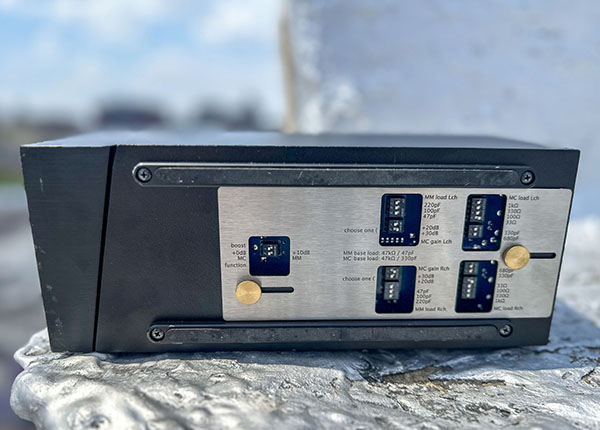
Mike Mettler: Thanks, Ken. This particular Grimm PW1 model was first sent directly to me once I had returned home from AXPONA. In fact, I took receivership of it not all that long after the unit had been shown to me in person at the big show by creative director Eelco Grimm as we huddled together just outside the company’s main demo room on the 15th floor.
Before I commenced my listening sessions, I plugged in and turned on the PW1 for the recommended 24hr burn-in period, as suggested in the manual. I left the PW1 turned on for the duration of my testing period even when I wasn’t using it, also as recommended. Shortly after that initial burn-in period had passed, I then ventured to join it into the signal chain of my reference system, which includes a Pro-Ject PerspeX turntable fitted with a Sumiko Blackbird MC cartridge, and a pair of chin-high GoldenEar Triton One floorstanding speakers. AudioQuest cabling, similar to Ken’s array, handled the connections. As I am one who tends to prefer dark black finishes for the balance of the gear in my system — not to mention most any accessory that’s also in the equipment mix, such as my current IsoAcoustics zaZen II stabilizing base and Reliable UberLight Frame so I can see what I’m doing — the dark Grimm brick fit in just perfectly.
After I settled on a gain of +20dB (the underbelly switch adjustment was a cinch, btw), I got down to some serious listening. First, I wanted to flex some late-’70s/early-’80s grooves, so I pulled out my Specialty pressing of Diesel’s 1981 Watts in a Tank LP (Regency/Atlantic RY 19315). After a thorough cleaning session with my Degritter Mark II RCM, I cued up the Dutch rockers’ hit album opener, “Sausalito Summernight” (Side One, Track 1). The Grimm ensured that the middle “ping-pock” synth break held its steady sonic character — said break courtesy some keen Moog synth programming, though its overall vibe recalled the classic ARP Odyssey synth break that’s in the solo section of Joe Walsh’s perennial 1978 crowd-pleaser, “Life’s Been Good.” Even better, the signature, wide-panned main “Sausalito” guitar riff that returns right after the bridge displayed all the intended impact, replete with that just-right amount of echo. Prior to that sequence, the tradeoff solo section between guitarists Mark Boon and Rob Vunderink — the first one more new-wavish, the second a Southern-rocklike scorcher — was lively, individualized, and engaging.
Since I had just seen them perform in Buffalo back on March 28, 2025, I was eager to play Herb Alpert’s Tijuana Brass’ eternal 1965 A&M jazz classic Whipped Cream & Other Delights via its new 60th anniversary LP reissue (HRB 255). A heavy picture disc featuring the infamous “en-crème” cover art replicated on both sides, this new-to-2025 LP evidenced no playback issues, and the Grimm kept it swinging in all the right ways. The trumpet blend of Alpert (90 years young, as of this posting!) and Tonni Kalash on “A Taste of Honey” (Side One, Track 1) swayed with head-bopping-induced aplomb, while the separation on “Tangerine” (Side One, Track 3) — period percussion on the left, piano tinkling on the right that I believe is courtesy Leon Russell, semi-subtle humming down the middle — had me visualizing a sunglasses-always-on stay in Magic City. The groovy, full horn blend on Allen Toussaint’s tasty “Whipped Cream” (Side One, Track 5) was finely punctuated by taut song-ending drumbeats (likely a Hal Blaine special).
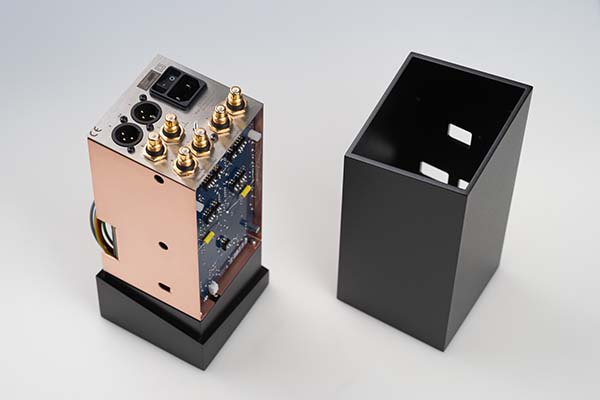
Switching over into a blues mode, next came Samantha Fish’s April 2025 offering, Paper Doll (Rounder 1166102521). I went right to the brooding “Fortune Teller” (Side B, Track 1), which opens with a gnarly riff splay over on the right, and Fish’s slit-eyed ’n’ sneering vocals up the middle. When she deigns to unleash her vocal fury, the organ fills around her could have threatened to overload the volume leap, but the Grimm kept everything in check — even when the tempo galloped up to fuller steam after the hard stop in the middle of the track. (My interview with Fish about it all will post here on AP fairly soon, btw.)
After going through a few more 2025-released genre hops — Cosmic Cathedral’s prog-a-riffic Deep Water 2LP set (InsideOut Music IOM742) and Dean Wareham’s alt-dreampop reverie That’s the Price of Loving Me (Carpark CAK180; my interview with Wareham is also coming semi-soon!) — it wasn’t hard to fall further in love with this ace unit. No matter what I cued up on my table, the Grimm PW1 phono preamp delivered the goods time after time, LP after LP. It all came across as crisp and clean with no caffeine, to borrow a phrase of yore.
Back to Ken now to wrap things up, and to also put the Grimm PW1 in proper phono-pre price-range comparative context.
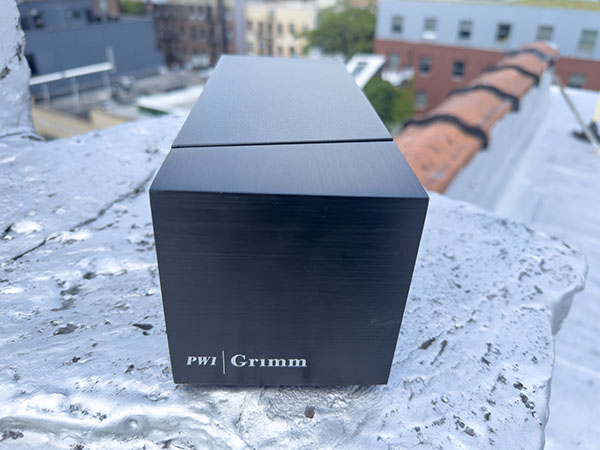
Conclusions
Thanks, Mike. The Grimm Audio PW1 phono preamp stands out as potentially the quietest phono preamp I’ve experienced, with a velvet-black clarity that’s as striking as a sunrise. Rhythmically, it nearly matches my Manley Chinook ($3,199) but is just shy of its exceptional viscosity, impact, and tonal richness. Compared to the PrimaLuna EVO 100 ($4,195), the Grimm offers tougher grooves, transparency, and directness. It also rivals the Allnic DT-5000 ($6,000) in musicality, flow, and color control, though it doesn’t exactly match that pricier model’s tubed tonal beauty, atmosphere, softness, and treble sweetness. Instead, the Grimm PW1 serves as a controlled yet open channel, presenting each record in a vast soundfield with maximized dynamics and power, right on the cusp of the warmth and touch of top-tier tubed phono preamps.
The bottom line is, the Grimm Audio PW1 phono preamp is a captivating device, delivering a powerful, decisive, and immersive experience that sometimes feels three-dimensional. With a bold and clear perspective, it presents music on a grand stage, imbued with purpose and drama. It elevates every record, highlighting their best qualities with a smooth yet dynamic touch. The PW1 packs a punch, smartly housed in its striking, dark rectangular case. We both heartily recommend you give it a try.
For more about Grimm Audio, go here.
To find an authorized Grimm Audio dealer, go here.
Author bios: Ken Micallef — former musician, former artist, and former legal wastrel — has written numerous hi-fi equipment reviews for Stereophile and Analog Planet, and his byline has also appeared within Mojo, Electronic Musician, and The Grammys. You can also find him at YouTube (Ken Micallef Jazz Vinyl Audiophile).
Mike Mettler is the editor of Analog Planet in addition to being the music editor of our sister site Sound & Vision, and he’s also a contributing music editor to one of our other sister sites, Stereophile, in addition to being the regular Vinyl Icons column scribe for Hi-Fi News. Plus, he’s quite partial to vintage 1967 Mustang fastbacks, but that’s a story for another time and place.
